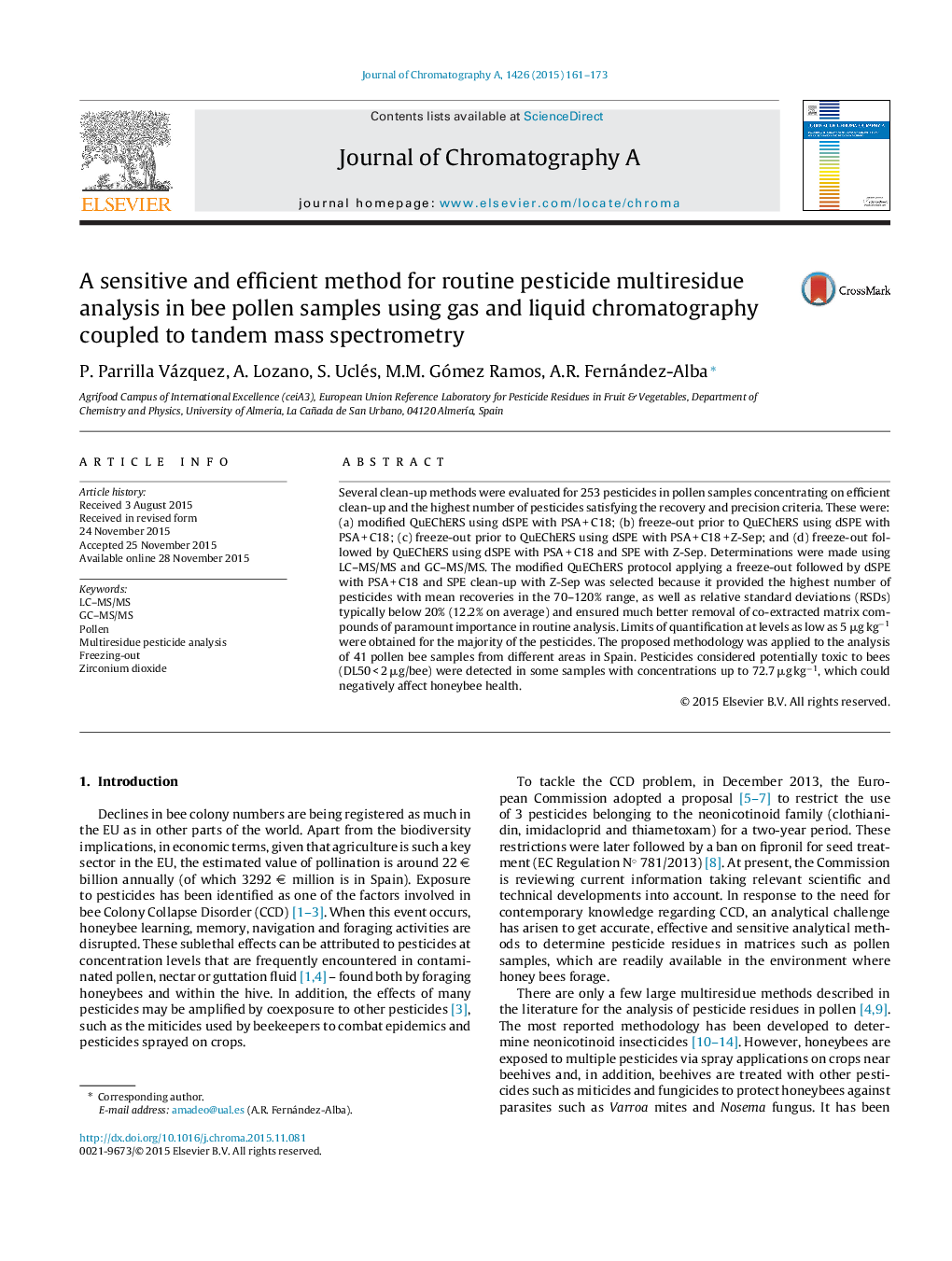| Article ID | Journal | Published Year | Pages | File Type |
|---|---|---|---|---|
| 7610666 | Journal of Chromatography A | 2015 | 13 Pages |
Abstract
Several clean-up methods were evaluated for 253 pesticides in pollen samples concentrating on efficient clean-up and the highest number of pesticides satisfying the recovery and precision criteria. These were: (a) modified QuEChERS using dSPE with PSA + C18; (b) freeze-out prior to QuEChERS using dSPE with PSA + C18; (c) freeze-out prior to QuEChERS using dSPE with PSA + C18 + Z-Sep; and (d) freeze-out followed by QuEChERS using dSPE with PSA + C18 and SPE with Z-Sep. Determinations were made using LC-MS/MS and GC-MS/MS. The modified QuEChERS protocol applying a freeze-out followed by dSPE with PSA + C18 and SPE clean-up with Z-Sep was selected because it provided the highest number of pesticides with mean recoveries in the 70-120% range, as well as relative standard deviations (RSDs) typically below 20% (12.2% on average) and ensured much better removal of co-extracted matrix compounds of paramount importance in routine analysis. Limits of quantification at levels as low as 5 μg kgâ1 were obtained for the majority of the pesticides. The proposed methodology was applied to the analysis of 41 pollen bee samples from different areas in Spain. Pesticides considered potentially toxic to bees (DL50 < 2 μg/bee) were detected in some samples with concentrations up to 72.7 μg kgâ1, which could negatively affect honeybee health.
Related Topics
Physical Sciences and Engineering
Chemistry
Analytical Chemistry
Authors
P. Parrilla Vázquez, A. Lozano, S. Uclés, M.M. Gómez Ramos, A.R. Fernández-Alba,
